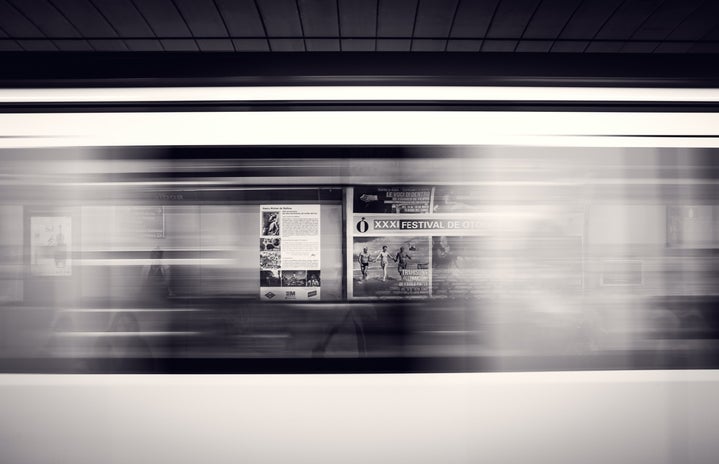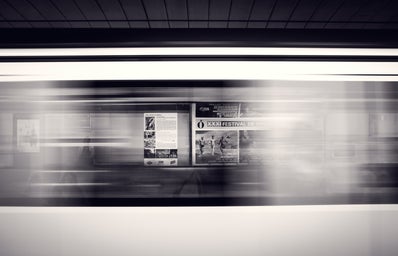Emily Solley currently studies English Literature at Florida State University. This semester, she’s adventuring abroad to Florence, Italy to study Italian Reading and Conversation, a special topic art history class on the Florentine Renaissance and Comparative Politics: European Union. This column has two purposes. First, to share the opportunity of experiencing a different country with those of you are still in the U.S. (and hopefully convince you to study abroad yourself) and second, to share helpful information with those who are currently studying abroad. This week in “When in Florence,” Emily gives you all of the deets on the things you absolutely cannot miss in Florence’s historic center!
Breakfast at La Loggia degli Albizi
A cappuccino and a jelly filled croissant from La Loggia.
Courtesy: Emily Solley
Taking a left from the study center, enjoy your walk along the cobblestone street filled with busy pedestrians and leather shops. A short, two-minute walk will deliver us to the glass-paned doors of the cheerful, spacious bar. Order a pastry from the display case and your coffee of choice from one of the baristas and eat it standing at the bar.
Note for FSU students: You can pay with one of your meal tickets (worth 5 euro) and the cashier will hand you a receipt so you can redeem the remainder later on.
The Duomo
The Duomo as seen from the top of the Campanile.
Courtesy: Cassity Rickert
Of the architecture that defines the Florentine skyline, the Duomo is by far the most impressive. This stunning architectural achievement remains the largest brick dome ever constructed. Its beauty is best appreciated from all angles, so I would recommend beginning at the façade (see below) and craning your neck to marvel at Brunelleschi’s jaw-dropping dome. Before heading inside, be sure to turn around and inspect the doors to the Baptistery, especially the central door, Ghiberti’s Gates of Paradise. The Duomo’s relatively bare interior puts all focus on the marvelous architecture and stands in stark comparison to the overwhelmingly colorful walls of other Italian cathedrals.
From left to right: The Baptistery, the façade of the Duomo, the famous dome itself and the Campanile.
Courtesy: Emily Solley
Entrance to the Duomo is free, but you can pay 15€ for a ticket that includes entrance to the Baptistery and the Duomo museum as well as a climb of both the Duomo and the Campanile. The Duomo museum is well worth a visit if you’re interested in seeing original artwork, statues and architectural plans.
The façade of the Duomo.
Courtesy: Emily Solley
Palazzo Vecchio
The Palazzo Vecchio’s tower is visible from all over the city.
Courtesy: Emily Solley
Just as the Duomo is the historic religious center of Florence, the Palazzo Vecchio stands as a testament to political and judicial authority. Today, you can admire the powerful demonstration of the Medici family’s wealth and power from the bustling Piazza della Signoria. Before entering the town hall, admire the collection of beautiful sculptures to the right, including Cellini’s famous Perseus With the Head of Medusa. Be sure to walk around the statues and admire them from all angles, looking for the rapid movement and flowing energy present despite their marble cages. Once you have had your fill of sculpture, consider touring the palace for more art and a chance to travel back in time to Renaissance Florence. For 18€, you can tour the palace, view the Roman ruins beneath and explore the tower and battlements.
Giambologna’s 1599 Hercules Beating the Centaur Nessus.
Courtesy: Emily Solley
Ponte Vecchio
The view from the Ponte Vecchio.
Courtesy: Emily Solley
The Ponte Vecchio is unique: it was the only bridge in Florence to survive pre-emptive destruction by Nazi soldiers hoping to slow Allied troops on their march north. It is worth a visit both to admire its unique appearance and to gaze over the sides at the tranquil banks of the Arno River. It’s worth mentioning that the Ponte Vecchio is a useful navigation tool. If you can find the river, you can find the Ponte Vecchio and from there walk straight to the Duomo.
Palazzo Pitti
The Palazzo Pitti at sunset.
Courtesy: Emily Solley
Once the residence of the grand-dukes of Tuscany and Italian kings, the Palazzo Pitti remains regal and imposing even six centuries after its construction. The memory of political giants like Napoleon Bonaparte and King Victor Emmanuel II still lingers in its halls and gardens, although today the Palazzo Pitti is just the largest museum in Florence. Although government owned and used only as a museum, the Palazzo Pitti retains an air of magnificence and domesticity – you’ll feel as if you are the guest of a grand family rather than a tourist in a museum. Within, you can see Renaissance paintings, the Royal Apartments, modern art and separate museums dedicated to silver, porcelain and carriages. The Palazzo Pitti is perhaps most notable for the Boboli Gardens, which are vast enough to earn their own post.
Dinner at Gusta Pizza
A margherita pizza with mozzarella, olive oil, garlic, tomato sauce, and basil.
Courtesy: Emily Solley
For authentic pizza at a reasonable price, Gusta Pizza is the place to go. The most popular option is the margherita pizza, but there are no bad choices on the menu. If you’re looking for something more adventurous, order the specialty pesto pizza for 7€ (not on the menu, but always available).
Note for FSU students: Meal tickets are worth 5€, so if you want a specialty menu item you are better off paying the difference in cash.


